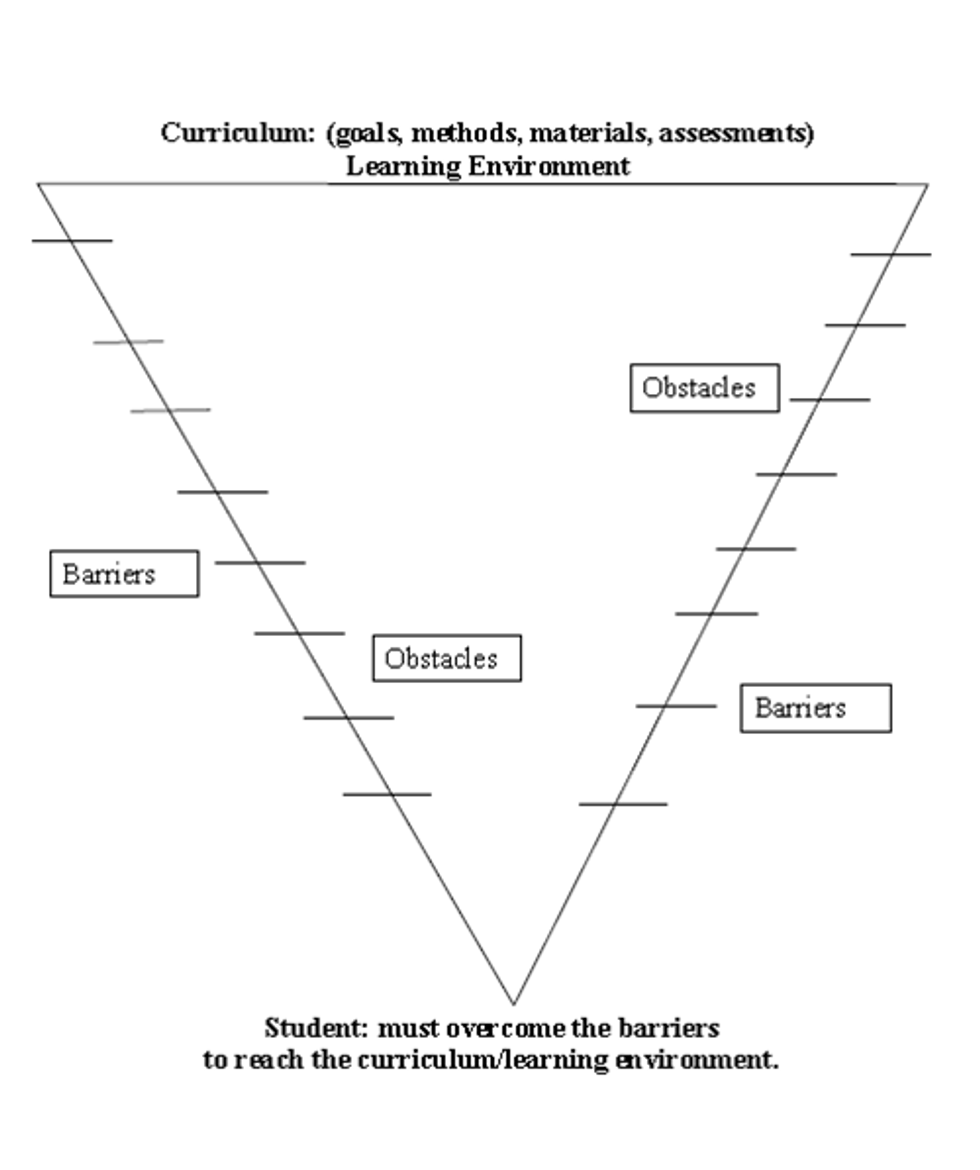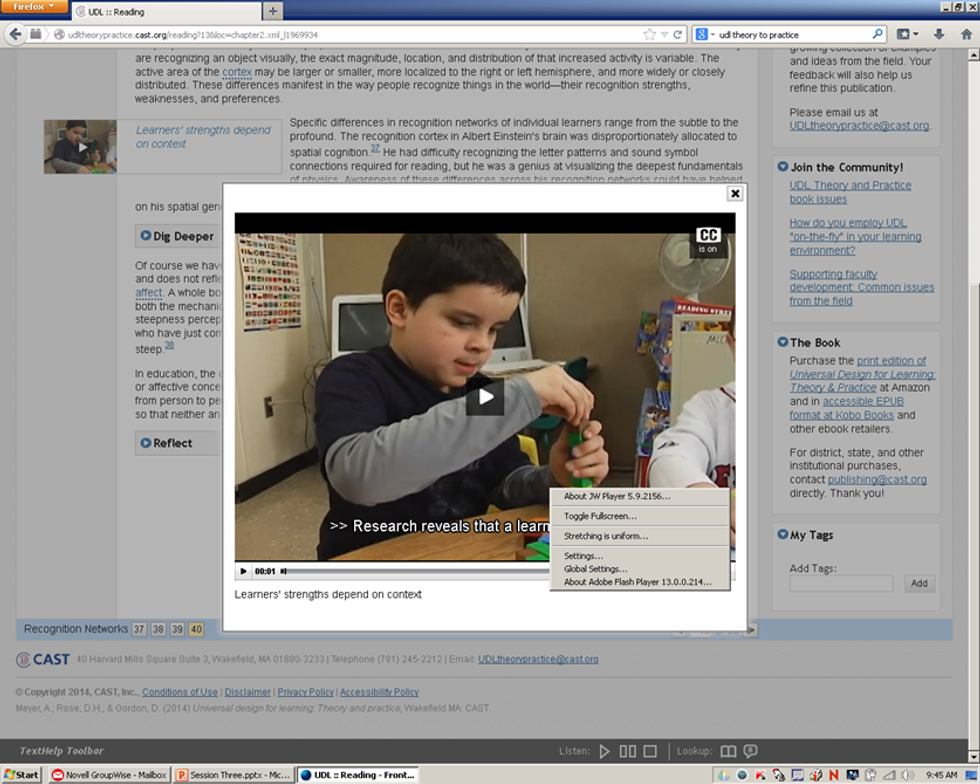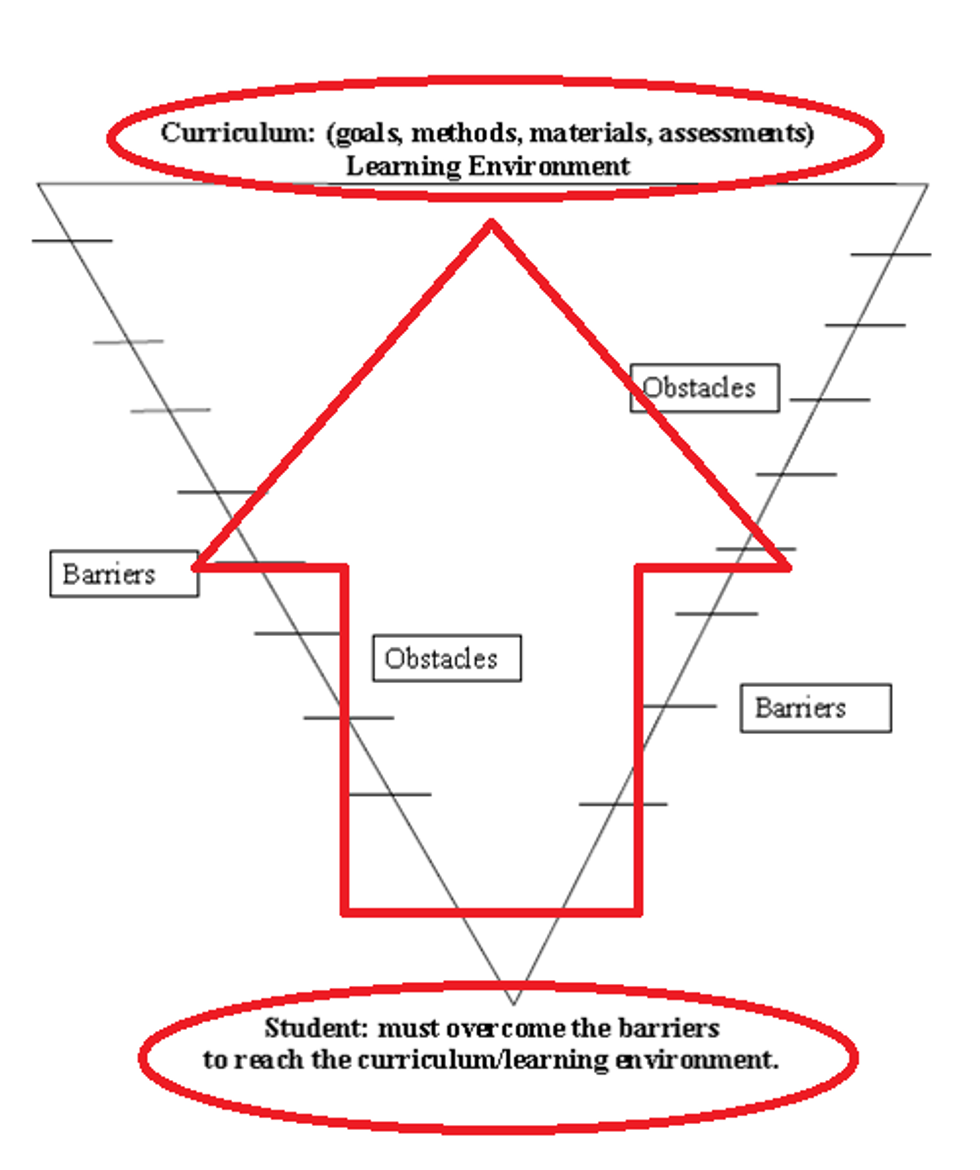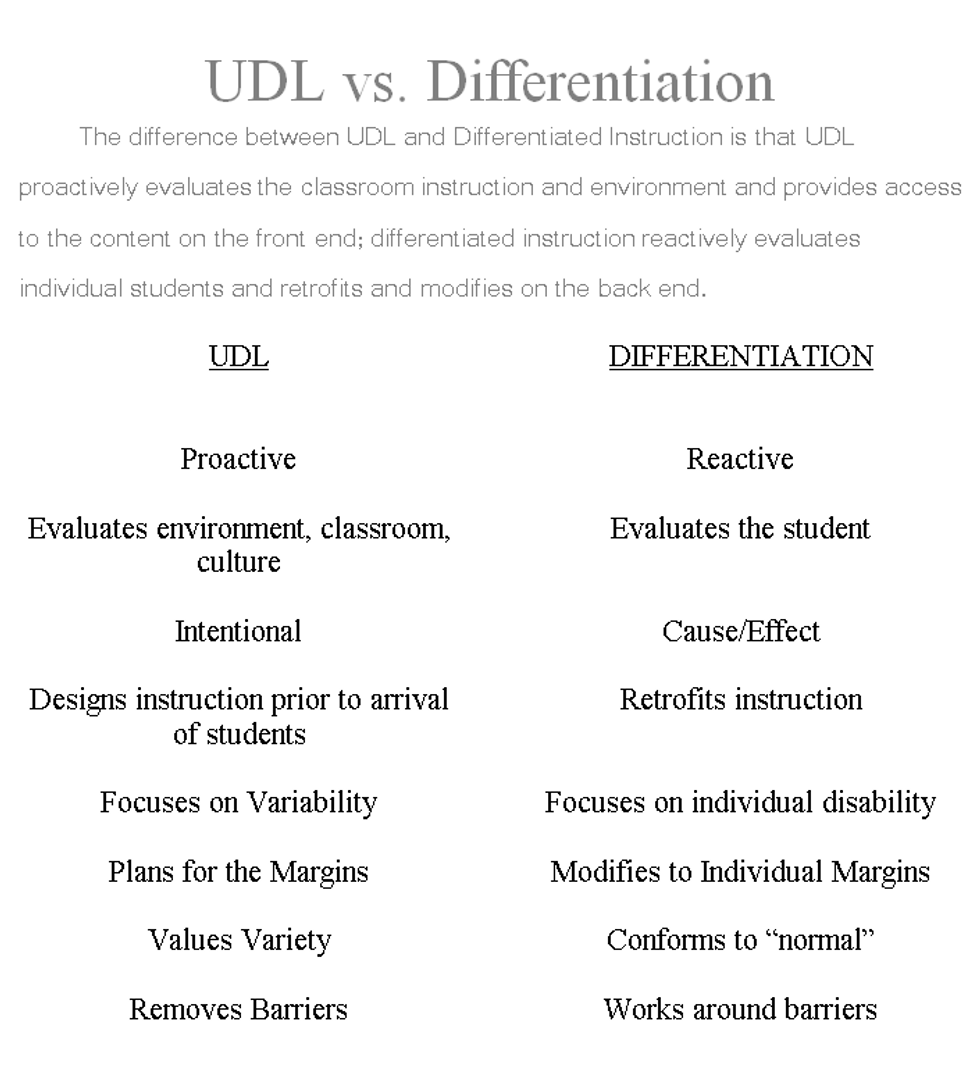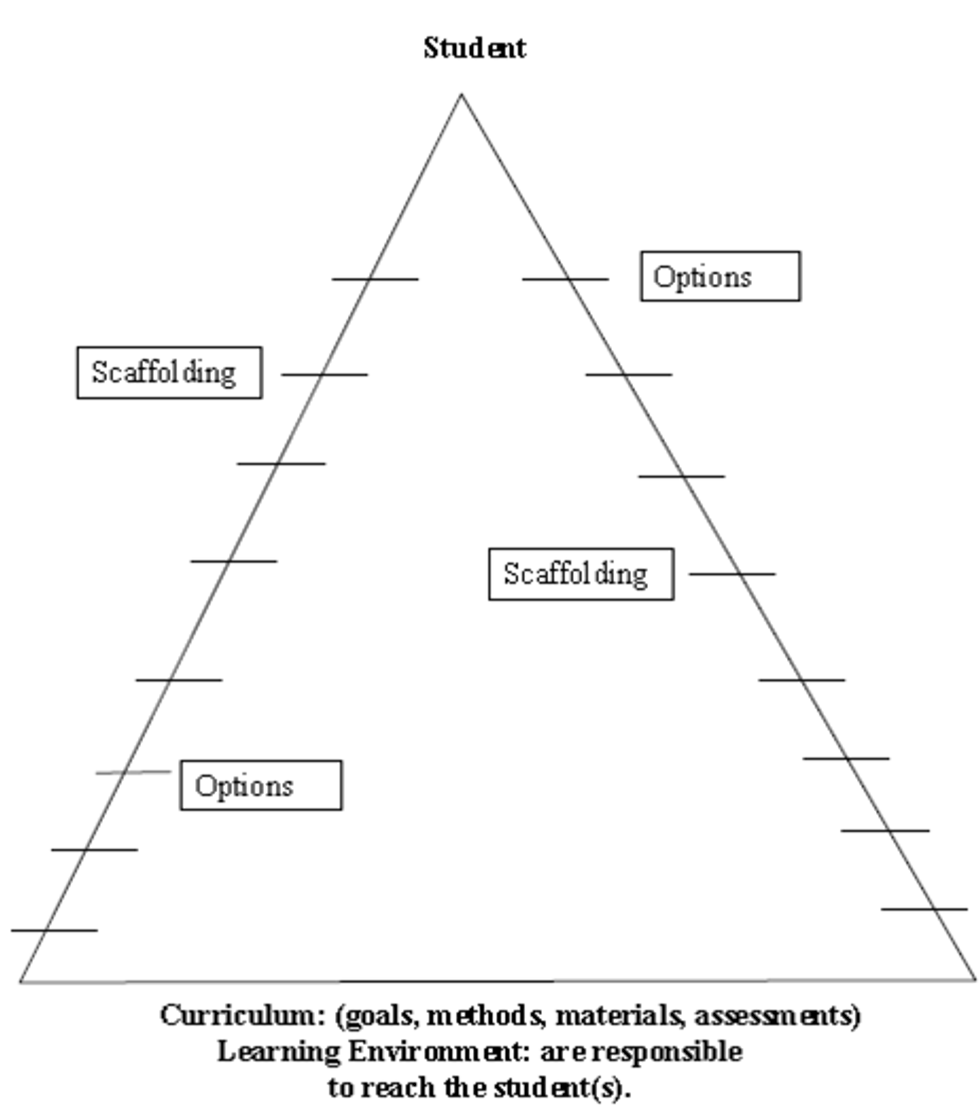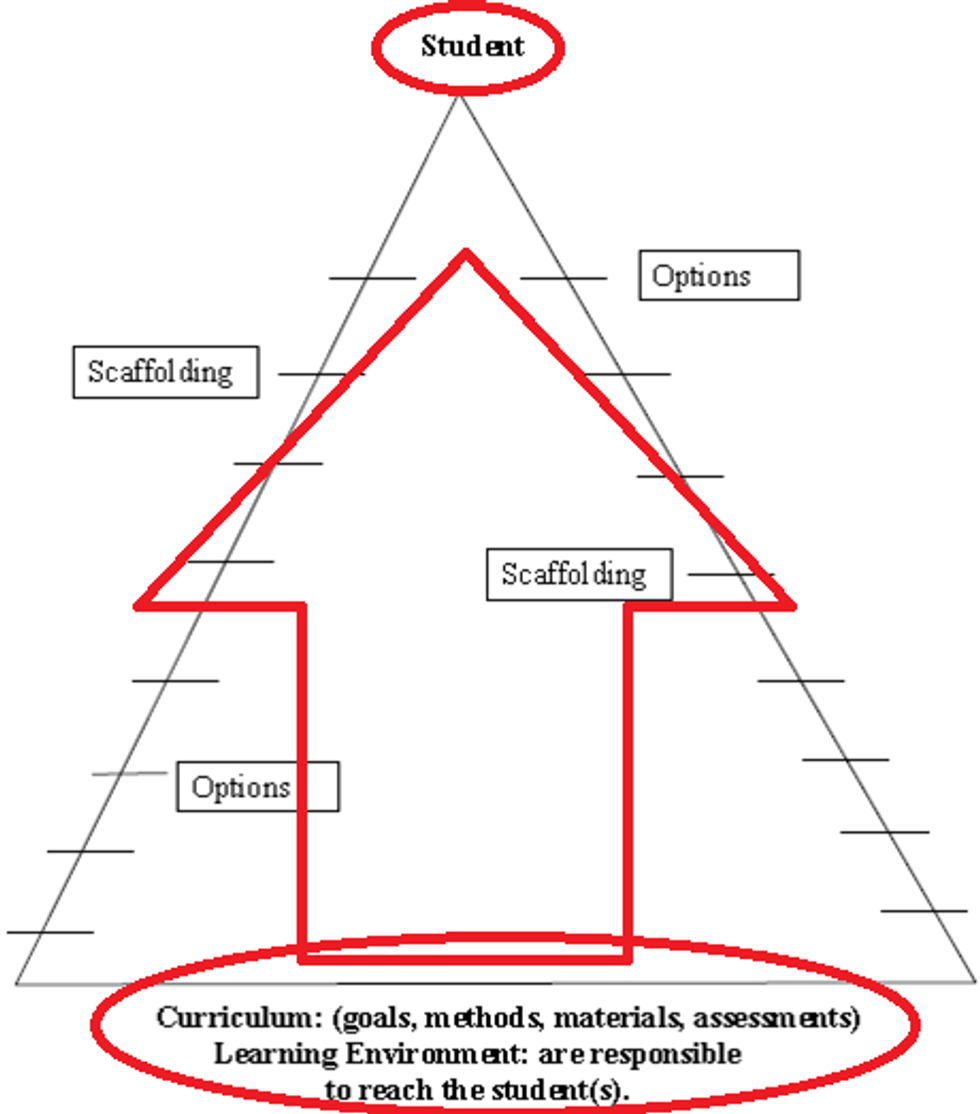Understanding contextual disability, recognizing student variability, and evaluating curriculum, instruction, assessment and the environment are keys to student success. These components are also paramount to designing and delivering instruction and creating learning environments that leverage student strengths while minimizing barriers to learning. Universal Design for Learning (UDL) provides the framework to do so! However, one must flip their current paradigm of thinking for reaching learners.
Traditionally, students enter the classroom (learning environment) as a highly variable learner and are expected to "fit" or "conform". In this environment, a student's strengths are relative to their ability to overcome the barriers and obstacles to learning. (see diagram below) The burden in placed on the student to do so.
As a result, a student's true actual strengths are lost in an educational obstacle course.
Additionally, we spend numerous hours trying to address all the individual needs presented rather than looking at systematic variability. In this paradigm the context is disabling and places undue burdens on the students. As you can see by the diagram below, it is clearly each individual student's responsibility to overcome the barriers to learning and come up and "meet the curriculum".
A common approach to addressing student needs in this environment is to systematically differentiate (see analogy below) in hindsight rather than plan and design proactively for systematic student variability. With Universal Design for Learning, however, you evaluate the curriculum and learning environment to see what is disabling and then provide scaffolding, support, options, and choice.
UDL is not a radical way to teach, it is a radical way to think about how and why you teach the way you do and then continuously and recursively reflect, revise and employ the UDL framework to proactively create a learning environment and interactive experience that students enter into from the very first day of instruction. One must "flip" their thinking and make a paradigm shift. (see diagram below) UDL is a framework you employ to intentionally create an inclusive learning environment and experience that is accessible and conducive to learners.
Universally Designed Learning Environments takes the burden off the student to overcome barriers and obstacles and places it squarely on the curriculum and learning environment to come up and meet the needs of the students.
"Everyone is a genius. But if you judge a fish on its ability to climb a tree,
it will live its whole life believing it is stupid." -Albert Eistein


